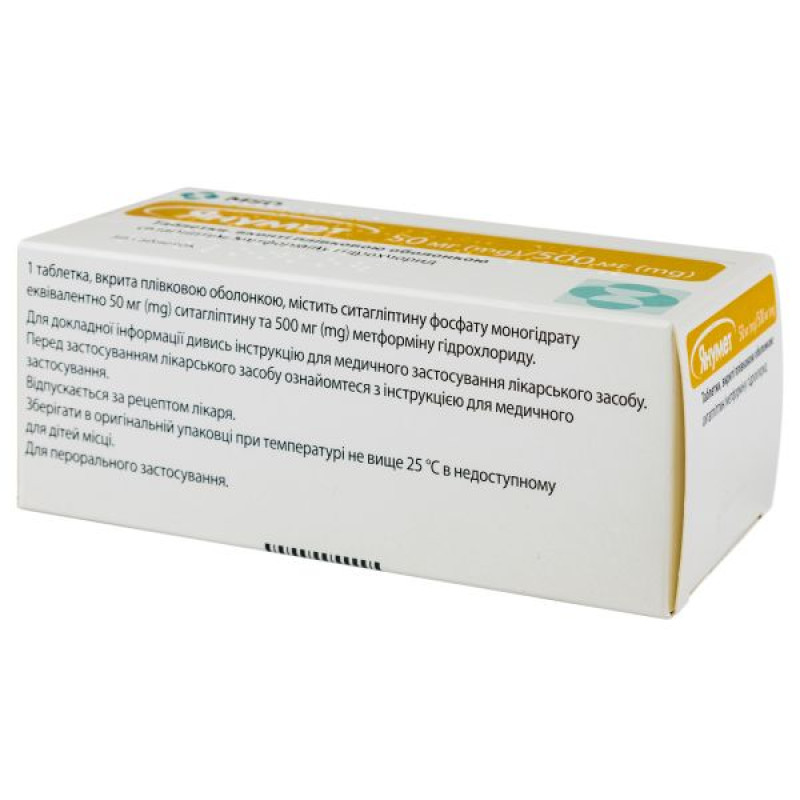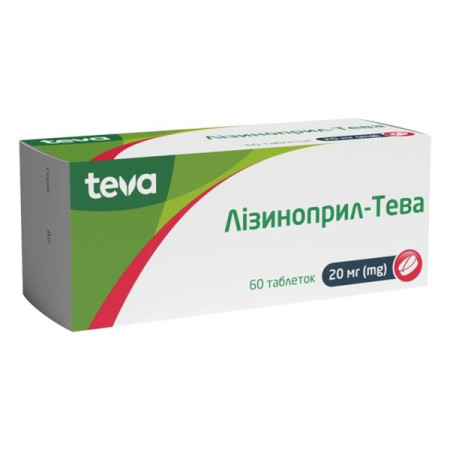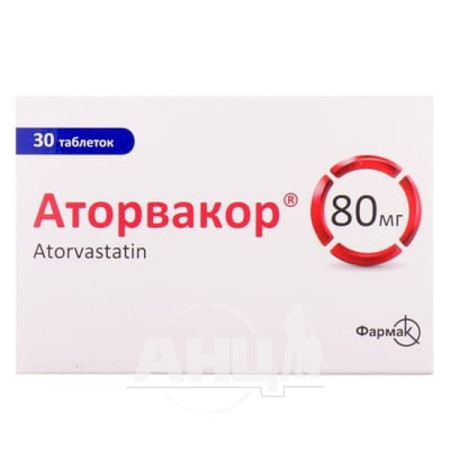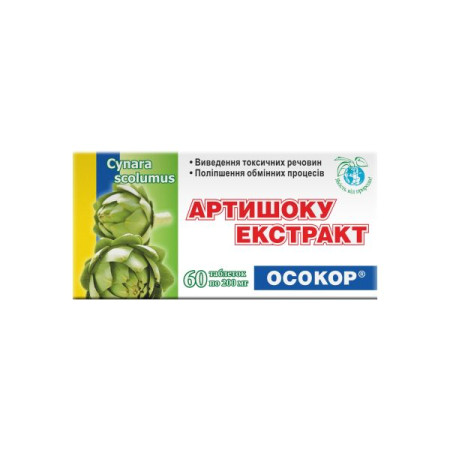Janumet film-coated tablets 50 mg / 500 mg blister No. 56

Instructions Janumet film-coated tablets 50 mg / 500 mg blister No. 56
Composition
active ingredients: sitagliptin, metformin hydrochloride;
1 film-coated tablet contains sitagliptin phosphate monohydrate equivalent to 50 mg sitagliptin and 500 mg or 850 mg or 1000 mg metformin hydrochloride;
excipients: microcrystalline cellulose, povidone, sodium lauryl sulfate, sodium stearyl fumarate;
tablet shell: dye Opadry II 85F94203 pink (tablets 50 mg/500 mg) or Opadry II 85F94182 pink (tablets 50 mg/850 mg), or Opadry II 85F15464 red (tablets 50 mg/1000 mg);
dye composition: polyvinyl alcohol, titanium dioxide (E 171), polyethylene glycol 3350, talc, black iron oxide (E 172), red iron oxide (E 172).
Dosage form
Film-coated tablets.
Main physicochemical properties:
50/500 mg tablets: film-coated tablets, light pink in color, engraved with "575" on one side and plain on the other side;
50/850 mg tablets: film-coated tablets, pink in color, engraved with "515" on one side and plain on the other side;
50/1000 mg tablets: film-coated tablets, red in color, engraved with "577" on one side and plain on the other side.
Pharmacotherapeutic group
Combination of oral hypoglycemic drugs. ATX code A10B D07.
Pharmacological properties
Pharmacodynamics.
Janumet is a combination of two hypoglycemic drugs with complementary mechanisms of action, designed to improve glycemic control in patients with type 2 diabetes mellitus: sitagliptin, a dipeptidyl peptidase 4 (DPP-4) inhibitor, and metformin hydrochloride, a member of the biguanide class.
Pharmacokinetics.
Mechanism of action. Janumet. Janumet (sitagliptin/metformin hydrochloride) combination tablets 50 mg/500 mg and 50 mg/1000 mg are bioequivalent to the respective doses of sitagliptin phosphate (Januvia) and metformin hydrochloride administered separately.
Pharmacokinetics in certain patient groups.
Patients with type II diabetes.
Sitagliptin: The pharmacokinetics of sitagliptin in patients with type 2 diabetes mellitus are similar to those in healthy volunteers.
Metformin. With preserved renal function, pharmacokinetic parameters after single and repeated doses of metformin in patients with type 2 diabetes mellitus and healthy volunteers are the same, cumulation of the drug does not occur when used in therapeutic doses.
Patients with renal impairment.
Sitagliptin: In patients with moderate renal impairment (GFR ≥ 30 to ≤ 45 mL/min), an increase in plasma AUC of sitagliptin was observed approximately 2-fold, and in patients with severe (GFR < 30 mL/min) and end-stage renal disease (on hemodialysis), the AUC value increased 4-fold. Sitagliptin is very moderately eliminated during hemodialysis (approximately 13.5% of the administered dose of sitagliptin was removed during a 3- to 4-hour hemodialysis session, which was started 4 hours after drug administration).
Metformin: In patients with reduced renal function, the plasma half-life of the drug is prolonged and renal clearance is reduced (see sections "Contraindications", "Special instructions for use").
Patients with impaired liver function.
Sitagliptin. No dose adjustment of sitagliptin is required in patients with mild to moderate hepatic impairment (≤ 9 on the Child-Pugh scale). There are no clinical data on the use of sitagliptin in patients with severe hepatic impairment (more than 9 points on the Child-Pugh scale). Since sitagliptin is excreted primarily by the kidneys, no effect on the pharmacokinetics of sitagliptin is expected in patients with severe hepatic impairment.
Metformin: Studies of the pharmacokinetic parameters of metformin in patients with hepatic insufficiency have not been conducted.
Elderly patients. No dose adjustment is required based on patient age. Age has no clinically significant effect on the pharmacokinetics of sitagliptin. In elderly patients (65–80 years), plasma concentrations of sitagliptin are approximately 19% higher than in younger patients.
Children.
The pharmacokinetics of sitagliptin (single dose of 50 mg, 100 mg or 200 mg) have been studied in children (aged 10 to 17 years inclusive) with type 2 diabetes. In this population, plasma AUC values of sitagliptin at the adjusted dose were approximately 18% lower compared to those in adult patients with type 2 diabetes at a dose of 100 mg. Sitagliptin has not been studied in children under 10 years of age.
Indication
For the treatment of adult patients with type 2 diabetes mellitus:
Janumet is indicated in combination with a sulfonylurea (a triple combination) as an adjunct to diet and exercise in patients inadequately controlled on maximally tolerated metformin and a sulfonylurea.
Janumet is indicated in combination with a peroxisome proliferator-activated receptor (PPAR-γ) agonist (e.g., a thiazolidinedione) (triple drug combination) as an adjunct to diet and exercise in patients inadequately controlled on maximally tolerated dose of metformin and a PPAR-γ agonist.
Janumet is also indicated in patients taking insulin (a combination of three drugs) as an adjunct to diet and exercise to improve glycaemic control in patients who have not achieved adequate control on a stable dose of insulin and metformin.
Contraindication
Known hypersensitivity to sitagliptin phosphate, metformin hydrochloride or any other component of the drug.
Any type of acute metabolic acidosis (e.g. lactic acidosis, diabetic ketoacidosis).
Diabetic precoma.
Severe renal insufficiency (GFR < 30 ml/min (see section "Special warnings and precautions for use", "Renal insufficiency")).
Acute conditions that may affect renal function: dehydration, severe infections, shock, intravascular administration of iodinated contrast agents (see section "Special warnings and precautions for use").
Acute or chronic diseases that can lead to tissue hypoxia, such as heart or pulmonary failure, recent myocardial infarction, shock.
Liver dysfunction.
Acute alcohol intoxication, alcoholism.
Breastfeeding period.
Interaction with other medicinal products and other types of interactions
Coadministration of multiple doses of sitagliptin (50 mg twice daily) and metformin (1000 mg twice daily) was not associated with significant changes in the pharmacokinetics of sitagliptin or metformin in patients with type 2 diabetes.
Pharmacokinetic interaction studies of Janumet with other medicinal products have not been conducted; however, such studies have been conducted separately with the active substances sitagliptin and metformin.
Concomitant use is not recommended.
Alcohol: Alcohol intoxication is associated with an increased risk of lactic acidosis, especially in cases of starvation, malnutrition, or impaired liver function.
Contrast agents containing iodine
Janumet should be discontinued prior to or at the time of radiological examination and should not be restarted until 48 hours after the procedure, provided that renal function has been re-evaluated and found to be acceptable (see sections 4.3 and 4.4).
Combinations requiring precautions during use
Some medicinal products may have an adverse effect on renal function, which may increase the risk of lactic acidosis, such as NSAIDs, including selective cyclooxygenase (COX) II inhibitors, ACE inhibitors, angiotensin II receptor antagonists and diuretics, especially loop diuretics. When initiating such medicinal products in combination with metformin, careful monitoring of renal function is necessary.
Concomitant use of medicinal products that affect common renal tubular transport systems involved in the renal elimination of metformin (e.g. organic cation transporter-2 [OCT2]/multidrug transporter and toxin extrusion transporter [MATE] inhibitors such as ranolazine, vandetanib, dolutegravir and cimetidine) may lead to increased systemic exposure to metformin and increase the risk of lactic acidosis. The benefits and risks of concomitant use should be considered. Close glycaemic monitoring, dose adjustments within the recommended dose range and changes in diabetes treatment are required when these medicinal products are used concomitantly.
Glucocorticosteroids (systemic and local action), beta-2 agonists and diuretics have their own potential for hyperglycemic activity. The patient should be informed of this and blood glucose levels should be monitored more frequently, especially at the beginning of treatment with such drugs. If necessary, the dose of the antihyperglycemic drug should be adjusted during concomitant use with other drugs and after their withdrawal.
ACE inhibitors may lower blood glucose levels. If necessary, the dose of the antihyperglycemic drug should be adjusted during concomitant use with other drugs and after their withdrawal.
Effects of other medicinal products on sitagliptin
In vitro studies have shown that the main enzymes involved in the partial metabolism of sitagliptin are enzymes of the cytochrome CYP3A4 system with the participation of CYP2C8. In patients with normal renal function, metabolism (including CYP3A4) plays only a minor role in the clearance of sitagliptin. Metabolism may play a more significant role in the elimination of sitagliptin in severe and end-stage renal failure. Therefore, it is possible that potent CYP3A4 inhibitors (e.g. ketoconazole, itraconazole, ritonavir, clarithromycin) may alter the pharmacokinetics of sitagliptin in such patients. The effect of potent CYP3A4 inhibitors in patients with renal failure has not been studied in clinical studies.
In vitro transport studies have shown that sitagliptin is a substrate for p-glycoprotein and organic anion transporter type 3 (OAT3). In vitro, OAT3-mediated transport of sitagliptin was inhibited by probenecid, although the risk of clinically significant interactions is considered low. The concomitant use of OATP inhibitors and sitagliptin has not been studied in vivo.
Cyclosporine. In a study of co-administration of a single dose of sitagliptin 100 mg and a single oral dose of ciclosporin 600 mg, an increase in AUC and Cmax of sitagliptin was observed by approximately 29% and 68%, respectively. These changes in the pharmacokinetics of sitagliptin are not considered clinically significant. Also, no significant interaction reactions are expected when using other p-glycoprotein inhibitors.
Effects of sitagliptin on other medicinal products
In vitro data indicate that sitagliptin does not inhibit or induce CYP450 isoenzymes. In clinical studies, sitagliptin did not significantly affect the pharmacokinetics of metformin, glyburide, simvastatin, rosiglitazone, warfarin, or oral contraceptives; sitagliptin has a low affinity for CYP3A4, CYP2C8, or CYP2C9 substrates and organic cation transporters. Sitagliptin has a small effect on the plasma concentration of digoxin and may be a weak inhibitor of p-glycoprotein in vivo.
Digoxin. Sitagliptin has little effect on plasma digoxin concentrations. After administration of 0.25 mg of digoxin concomitantly with 100 mg of sitagliptin daily for 10 days, digoxin AUC increased by an average of 11% and Cmax by an average of 18%. No dose adjustment of digoxin is recommended. However, patients at risk for digoxin toxicity should be monitored if digoxin is co-administered with sitagliptin.
Application features
Janumet is not used to treat type 1 diabetes or diabetic ketoacidosis.
Acute pancreatitis
DPP-4 inhibitors are associated with a risk of acute pancreatitis. Patients should be informed of the characteristic symptom of acute pancreatitis, persistent severe abdominal pain. Symptoms of pancreatitis have resolved after discontinuation of sitagliptin (with or without supportive care), but very rare cases of necrotizing or hemorrhagic pancreatitis and/or death have been reported. If pancreatitis is suspected, Janumet and other medicinal products that may precipitate acute pancreatitis should be discontinued. If acute pancreatitis is confirmed, Janumet should not be initiated. Caution should be exercised in patients with a history of pancreatitis.
Lactic acidosis.
Lactic acidosis, a rare but serious metabolic complication, most often occurs during acute renal or cardiorespiratory disease, or sepsis. Metformin accumulation occurs during acute renal failure and increases the risk of lactic acidosis. In case of dehydration (severe diarrhea or vomiting, fever, or decreased fluid intake), metformin should be temporarily discontinued and a physician consulted.
The use of drugs that can sharply worsen renal function (e.g. antihypertensives, diuretics and NSAIDs) should be initiated with caution in patients taking metformin. Other risk factors for the development of lactic acidosis include alcohol abuse, hepatic insufficiency, inadequately controlled diabetes mellitus, ketosis, prolonged fasting and any conditions associated with hypoxia, as well as concomitant use of drugs that can cause lactic acidosis (see sections "Contraindications", "Interaction with other medicinal products and other types of interactions"). Patients and/or caregivers should be informed of the risk of lactic acidosis. Lactic acidosis is characterized by acidotic dyspnea, abdominal pain, muscle cramps, asthenia and hypothermia with subsequent coma. If such symptoms occur, the patient should stop taking metformin and consult a doctor immediately. Diagnostic laboratory findings include decreased blood pH (< 7.35), increased plasma lactate levels (> 5 mmol/L), and increased anion gap and lactate/pyruvate ratio.
Hypoglycemia.
There is a risk of hypoglycemia when Janumet is used in combination with insulin and a sulfonylurea. To reduce the risk of hypoglycemia, a lower dose of the sulfonylurea or insulin should be used.
Kidney function.
Janumet is contraindicated in severe renal impairment, in patients with GFR < 30 mL/min. The drug should be temporarily discontinued if there is a likelihood of changes in renal function (see section "Contraindications").
Hypersensitivity Reactions: Postmarketing reports of serious hypersensitivity reactions in patients taking sitagliptin include: anaphylaxis, angioedema, and exfoliative skin conditions, including Stevens-Johnson syndrome. These reactions have occurred within the first three months of taking sitagliptin and sometimes after the first dose. If hypersensitivity reactions are suspected, Janumet should be discontinued, other potential causes of the reaction should be evaluated, and alternative diabetes treatment should be instituted (see Adverse Reactions).
Bullous pemphigoid.
Bullous pemphigoid has been reported in post-marketing experience in patients taking DPP-4 inhibitors, including sitagliptin. If bullous pemphigoid is suspected, Janumet should be discontinued.
Surgery: Janumet should be discontinued prior to surgery under general, spinal, or epidural anesthesia. Therapy may be resumed no earlier than 48 hours after surgery or resumption of oral nutrition and provided that renal function has been reassessed and found to be stable (see Dosage and Administration).
Use of iodinated contrast agents. Intravascular administration of iodinated contrast agents may cause contrast-induced nephropathy, leading to metformin accumulation and an increased risk of lactic acidosis. Janumet should be discontinued prior to or at the time of the radiological examination and should not be restarted until 48 hours after the procedure and only if renal function has been re-evaluated and found to be acceptable (see sections 4.3 and 4.5).
Change in clinical status of a patient with previously controlled type 2 diabetes.
If a patient with controlled type 2 diabetes develops abnormal laboratory values or clinical symptoms (especially undiagnosed or ill-defined symptoms) while taking Janumet, ketoacidosis or lactic acidosis should be immediately ruled out by serum electrolytes and ketones, glucose levels, blood pH, lactate, pyruvate, and metformin concentrations. If acidosis of any etiology develops, discontinue Janumet and take appropriate measures to correct the acidosis.
Other caveats
Metformin may decrease serum vitamin B12 levels. The risk of decreased vitamin B12 levels increases with increasing metformin dose, duration of treatment and/or in patients with risk factors known to predispose to vitamin B12 deficiency. Serum vitamin B12 levels should be monitored if vitamin B12 deficiency is suspected (e.g. anaemia or neuropathy). Patients with risk factors for vitamin B12 deficiency may require periodic monitoring of vitamin B12 levels. Metformin therapy should be continued as long as tolerated by the patient and not contraindicated, and appropriate corrective treatment for vitamin B12 deficiency should be given in accordance with current clinical guidelines.
Sodium content.
Each 50/500 mg tablet contains less than 1 mmol sodium (23 mg), i.e. essentially sodium-free.
Each 50/850 mg tablet contains less than 1 mmol sodium (23 mg), i.e. essentially 'sodium-free'.
Each 50/1000 mg tablet contains less than 1 mmol sodium (23 mg), i.e. essentially sodium-free.
Use during pregnancy or breastfeeding
Pregnancy: There are no adequate data from the use of sitagliptin in pregnant women. Animal studies have shown reproductive toxicity at high doses of sitagliptin.
Limited data indicate that metformin use in pregnant women is not associated with an increased risk of congenital malformations in the fetus/child. Animal studies of metformin do not indicate harmful effects of the drug on pregnancy, embryonal/fetal development, parturition, or postnatal development.
Janumet should not be used during pregnancy. If the patient wishes to become pregnant or becomes pregnant, Janumet treatment should be discontinued as soon as possible and insulin therapy should be switched to.
Breast-feeding. No studies of the combination of active substances of the medicinal product have been conducted in lactating animals. In studies conducted with both active substances separately, both sitagliptin and metformin were excreted in the milk of lactating rats. Metformin is excreted in human milk in small amounts. It is not known whether sitagliptin passes into human milk. Therefore, Janumet should not be used in women during lactation (see section "Contraindications").
Fertility: Animal data do not indicate an effect of sitagliptin treatment on male or female fertility. There are no human data.
Ability to influence reaction speed when driving vehicles or other mechanisms
Janumet has no or negligible influence on the ability to drive or use machines. However, dizziness and drowsiness have been reported with sitagliptin, so caution should be exercised when driving or operating machinery.
In addition, patients should be warned about the risk of hypoglycemia when using Janumet in combination with a sulfonylurea or insulin.
Method of administration and doses
Method of application.
Janumet should be taken twice daily with food to reduce gastrointestinal (GI) adverse reactions associated with metformin.
The dosage regimen of Janumet should be selected individually, taking into account current therapy, efficacy and tolerability, but not exceeding the maximum recommended daily dose of sitagliptin - 100 mg.
Adults with normal renal function (GFR > 90 mL/min)
Available dosages of the drug:
50 mg sitagliptin/500 mg metformin hydrochloride;
50 mg sitagliptin/850 mg metformin hydrochloride;
50 mg sitagliptin/1000 mg metformin hydrochloride.
For patients who have not achieved adequate control with metformin monotherapy at the maximum tolerated dose.
The recommended starting dose of Janumet for patients inadequately controlled on metformin monotherapy should provide the recommended daily dose of sitagliptin of 100 mg (i.e. 50 mg twice daily) plus the current dose of metformin.
For patients switching from concomitant use of sitagliptin and metformin.
When switching from treatment with sitagliptin and metformin as monotherapy, the initial dose of Janumet should be equivalent to the dose at which sitagliptin and metformin were used separately.
For patients who are not adequately controlled on the maximum tolerated dose of metformin and a sulfonylurea.
The dose of Janumet should provide the recommended daily dose of sitagliptin of 100 mg (i.e. 50 mg 2 times a day) plus a dose close to the current dose of metformin. Patients using Janumet in combination with a sulfonylurea may require a lower dose of the sulfonylurea to reduce the risk of hypoglycemia (see section 4.4).
For patients who are not adequately controlled on a combination of metformin at the maximum tolerated dose and a PPAR-γ agonist.
The dose of Janumet should provide a daily dose of sitagliptin of 100 mg (i.e. 50 mg 2 times a day) plus a dose of metformin close to the current dose.
For patients who are not adequately controlled on a combination of insulin and metformin at their maximum tolerated dose.
The dose of Janumet should provide a daily dose of sitagliptin of 100 mg (i.e. 50 mg 2 times a day) plus a dose close to the current dose of metformin. When using Janumet with insulin, it may be appropriate to reduce the current dose of insulin to reduce the risk of hypoglycemia (see section "Special instructions").
Patients should continue to follow a special diet with adequate distribution of carbohydrate intake throughout the day. Overweight patients should continue to follow a low-calorie diet.
Certain patient groups
Kidney failure.
Patients with moderate renal impairment (glomerular filtration rate [GFR] ≥ 60 mL/min) do not require dose adjustment. GFR should be assessed before initiating treatment with metformin-containing medicinal products and at least annually thereafter. In patients at increased risk of further progression of renal failure and in the elderly, renal function should be assessed more frequently, e.g. every 3 to 6 months.
The maximum daily dose of metformin should preferably be divided into 2-3 doses. Factors that may increase the risk of lactic acidosis (see section 4.4) should be considered before prescribing metformin to patients with a GFR < 60 ml/min.
If Janumet is not available at an acceptable dosage, the individual components should be used instead of the fixed combination.
| GFR, ml/min | Metformin | Sitagliptin |
| 60 − 89 | The maximum daily dose is 3000 mg. Dose reduction may be considered in the event of worsening renal impairment. | The maximum daily dose is 100 mg. |
| 45 − 59 | The maximum daily dose is 2000 mg. The initial dose is no more than half the maximum dose. | The maximum daily dose is 100 mg. |
| 30 − 44 | The maximum daily dose is 1000 mg. The initial dose is no more than half the maximum dose. | The maximum daily dose is 50 mg. |
| < 30 | Metformin is contraindicated. | The maximum daily dose is 25 mg. |
Elderly patients. Since metformin and sitagliptin are excreted by the kidneys, Janumet should be prescribed with caution in elderly patients. To prevent metformin-associated lactic acidosis, renal function should be monitored, especially in elderly patients (see sections "Contraindications", "Special instructions").
Children.
Janumet should not be used in children aged 10 to 17 years due to insufficient efficacy. Currently available data are described in the sections "Adverse reactions", "Pharmacological properties: Pharmacokinetics". Janumet has not been studied in children under 10 years of age.
Overdose
Sitagliptin. In controlled clinical studies in healthy volunteers, single doses up to 800 mg were generally well tolerated. A small increase in QTc was observed at a dose of 800 mg, which was not considered clinically significant. There is no experience with doses greater than 800 mg in clinical studies. No dose-related adverse reactions were observed in studies with doses up to 600 mg daily for 10 days and 400 mg for 28 days.
A significant overdose of metformin (or the associated risks of lactic acidosis) may lead to lactic acidosis, which requires emergency medical attention and hospital treatment. The most effective method for removing lactate and metformin is hemodialysis.
In clinical studies, approximately 13.5% of the drug dose was removed from the body during a 3-4 hour hemodialysis session. If clinically indicated, prolonged hemodialysis is performed. It is not known whether sitagliptin is removed by peritoneal dialysis.
In the event of an overdose with Janumet, standard supportive measures should be initiated: removal of unabsorbed drug from the intestinal tract, clinical monitoring (including ECG), and the administration of supportive therapy as necessary.
Side effects
Clinical trials of Janumet therapy have not been conducted, but Janumet has been shown to be bioequivalent to sitagliptin and metformin when used in combination. Serious adverse reactions, including pancreatitis and allergic reactions, have been reported. Hypoglycemia has been reported when used in combination with a sulfonylurea (13.8%) and insulin (10.9%).
Sitagliptin and metformin
Adverse reactions are listed according to MedDRA terminology, presented by system organ class and absolute frequency. The frequency of occurrence is defined as: very common (≥ 1/10), common (≥ 1/100, < 1/10), uncommon (≥ 1/1,000, < 1/100), rare (≥ 1/10,000, < 1/1,000) and very rare (< 1/10,000), frequency unknown (cannot be estimated from the available data).
The frequency of adverse reactions is determined based on the results of placebo-controlled clinical trials and post-marketing surveillance.
Blood and lymphatic system disorders: rare: thrombocytopenia.
Immune system disorders: frequency unknown: hypersensitivity reactions, including anaphylactic reactions*†.
Metabolic disorders: common: hypoglycemia†.
Nervous system disorders: uncommon: drowsiness.
Respiratory, thoracic and mediastinal disorders: frequency unknown: interstitial lung disease*.
Gastrointestinal disorders: Common: nausea, flatulence, vomiting; uncommon: diarrhoea, constipation, upper gastrointestinal pain; frequency unknown: acute pancreatitis*†‡, fatal and non-fatal haemorrhagic and necrotising pancreatitis*†.
Skin and subcutaneous tissue disorders: uncommon: pruritus*; frequency unknown: angioedema*†, rash*†, urticaria*†, cutaneous vasculitis*†, exfoliative skin conditions including Stevens-Johnson syndrome*†, bullous pemphigoid*†.
Musculoskeletal and connective tissue disorders: frequency unknown: arthralgia*, myalgia*, pain in extremity*, back pain*, arthropathy*.
Renal and urinary disorders: frequency unknown: renal function impairment*, acute renal failure*.
*Adverse reactions were identified during post-marketing surveillance.
†See section “Special instructions for use”.
‡See “TECOS Cardiovascular Safety Study” below.
Description of selected adverse reactions
The following adverse reactions were observed more frequently when sitagliptin and metformin were used in combination with other antidiabetic medicinal products than when sitagliptin and metformin were used alone:
hypoglycemia (very common when used with sulfonylurea or insulin);
constipation (often when used with sulfonylureas);
peripheral edema (often when used with pioglitazone);
headache and dry mouth (uncommon when used with insulin).
Sitagliptin
In a study of sitagliptin 100 mg once daily compared with placebo, headache, hypoglycemia, constipation, and dizziness were reported. The following adverse reactions, regardless of causal relationship to drug, were reported in at least 5% of cases: upper respiratory tract infection and nasopharyngitis. In addition, osteoarthritis and pain in extremity were reported uncommonly (0.5% more in subjects taking sitagliptin compared to control).
Gastrointestinal adverse reactions have been reported very commonly in clinical trials and post-marketing experience with metformin. Nausea, vomiting, diarrhoea, gastrointestinal pain and loss of appetite occurred very commonly at the start of treatment and resolved spontaneously in most cases. Metallic taste (common); lactic acidosis, hepatic dysfunction, hepatitis, urticaria, erythema, pruritus (very rare); vitamin B12 depletion/deficiency (common) have also been reported (see section 4.4).
Children
In clinical studies of Janumet in children aged 10 to 17 years with type 2 diabetes, the adverse reaction profile was generally comparable to that in adults. In children with or without background insulin, sitagliptin was associated with an increased risk of hypoglycemia.
TECOS Cardiovascular Safety Study
The TECOS study to evaluate the cardiovascular safety of sitagliptin included 7,332 patients who received sitagliptin at a dose of 100 mg per day (or 50 mg per day if the baseline estimated glomerular filtration rate (eGFR) was ≥ 30 and < 50 mL/min/1.73 m2) and 7,339 patients who received placebo in the treatment-initiated group. Both drugs were added to the main therapy according to regional standards and taking into account HbA1c levels and cardiovascular risk factors. The overall incidence of serious adverse events in patients treated with sitagliptin was similar to that in patients treated with placebo.
In the population of all patients randomized to treatment, the incidence of severe hypoglycemic episodes was 2.7% in patients receiving insulin and/or sulfonylurea at baseline and 2.5% in patients receiving placebo; among patients not receiving insulin and/or sulfonylurea at baseline, the incidence of severe hypoglycemic episodes was 1.0% in patients receiving sitagliptin and 0.7% in the placebo group. The incidence of confirmed pancreatitis was 0.3% in patients receiving sitagliptin and 0.2% in the placebo group.
Post-marketing experience
The following adverse reactions have been identified during post-marketing use of Janumet, sitagliptin, or metformin: tubulointerstitial nephritis.
Reporting of suspected adverse reactions
It is important to report suspected adverse reactions after a medicinal product has been authorised. This allows for continued monitoring of the benefit/risk balance of the medicinal product. Qualified healthcare professionals are asked to report all suspected adverse reactions.
Expiration date
2 years.
Do not use after the expiry date stated on the packaging.
Storage conditions
Store in the original packaging at a temperature not exceeding 25 °C, out of the reach of children.
Packaging
14 tablets in a blister; 4 blisters in a cardboard box together with instructions for medical use.
Vacation category
According to the recipe.
Producer
Merck Sharp & Doom B.V., Netherlands.
Location of the manufacturer and address of its place of business.
Vaarderweg 39, 2031 BN Haarlem, Netherlands.
There are no reviews for this product.
There are no reviews for this product, be the first to leave your review.
No questions about this product, be the first and ask your question.


















